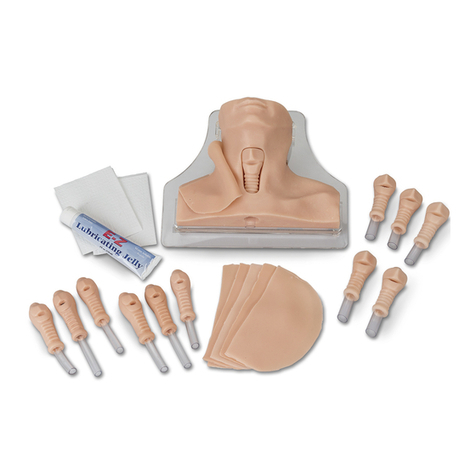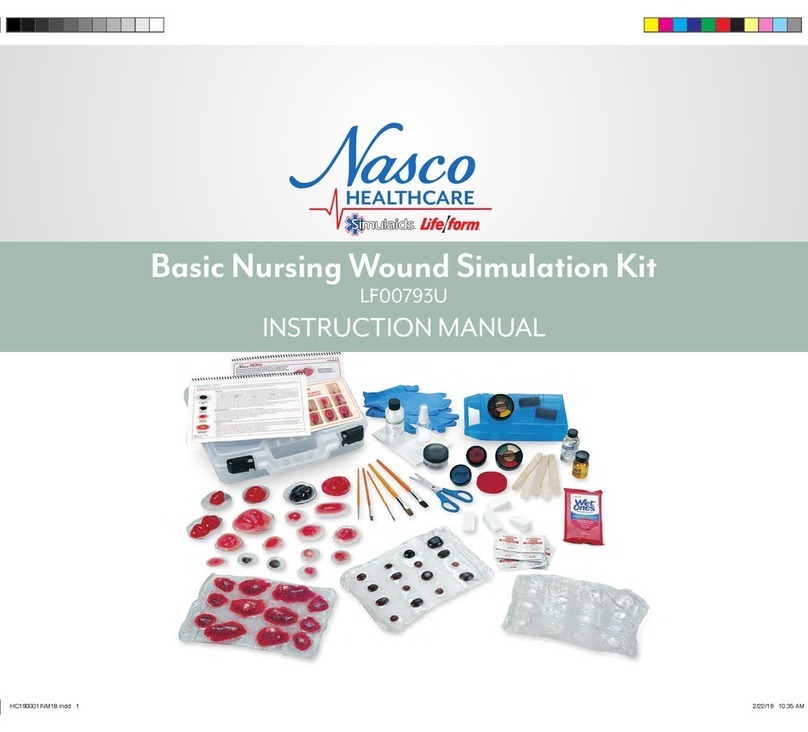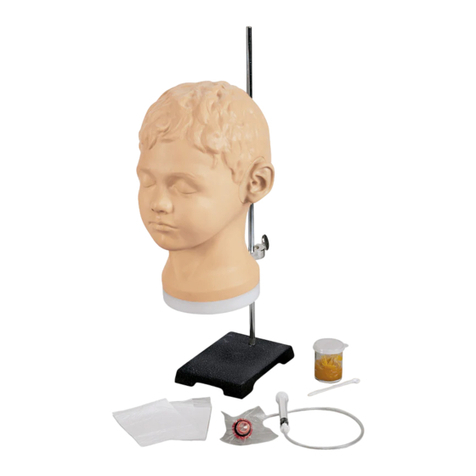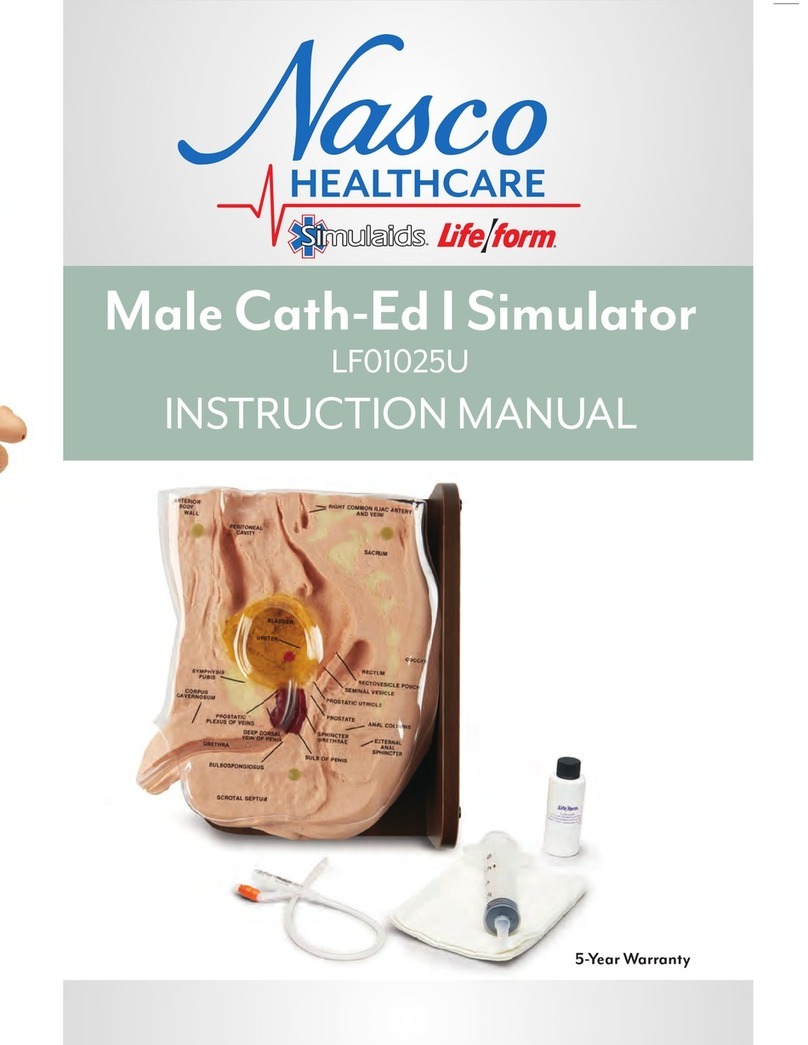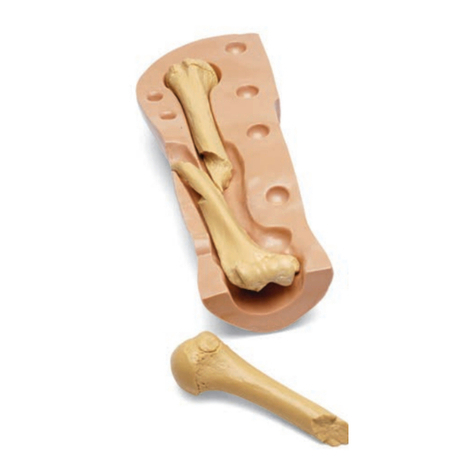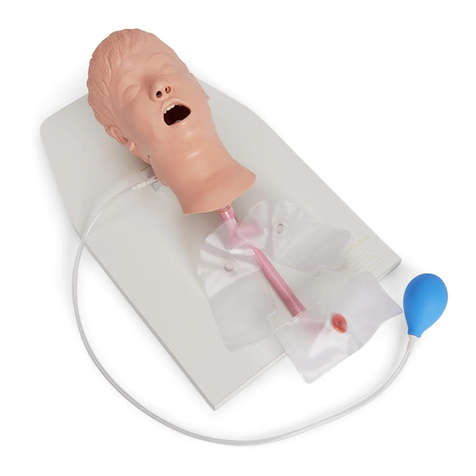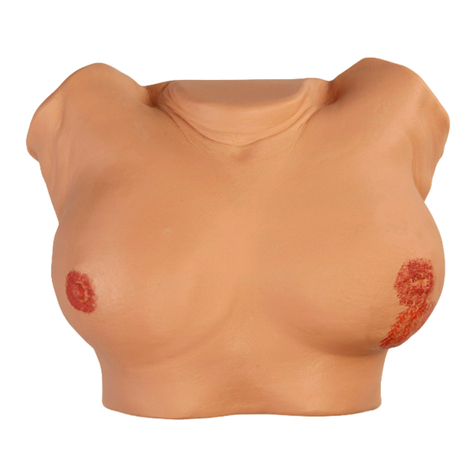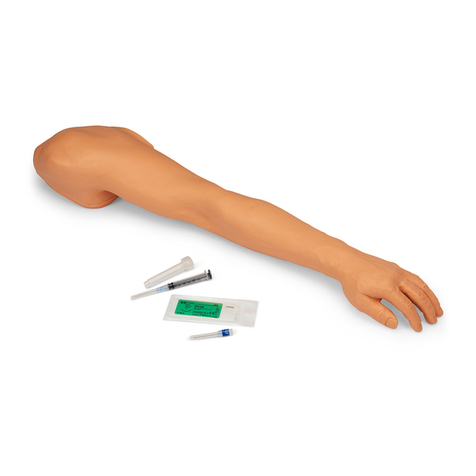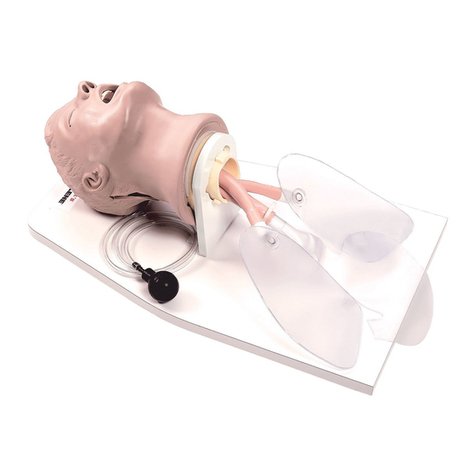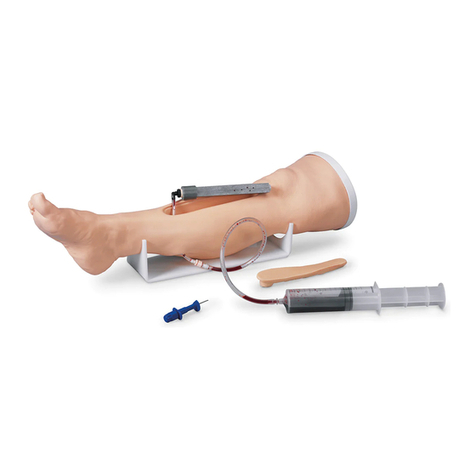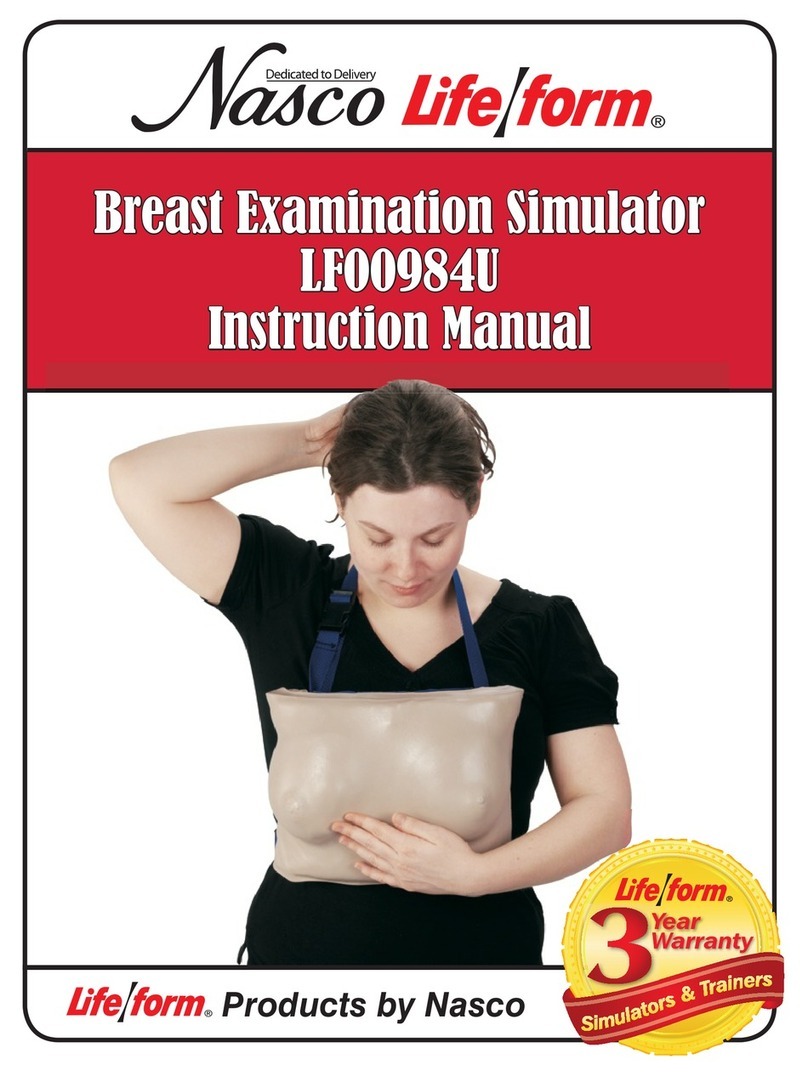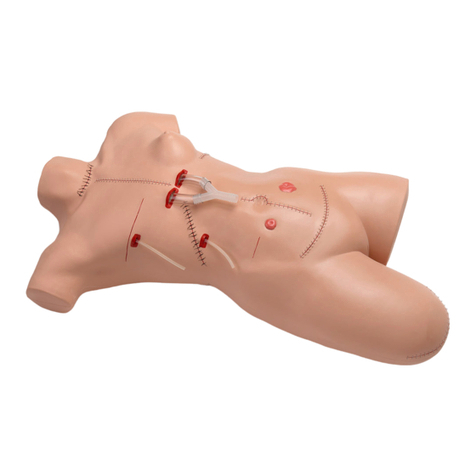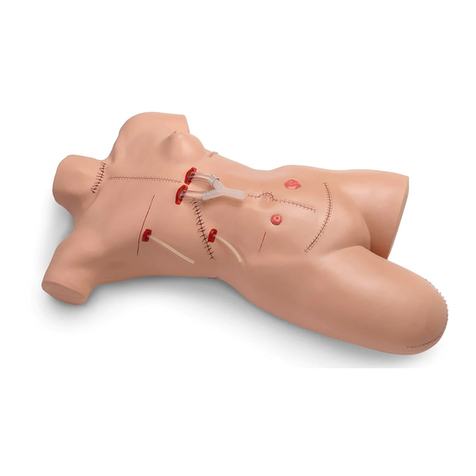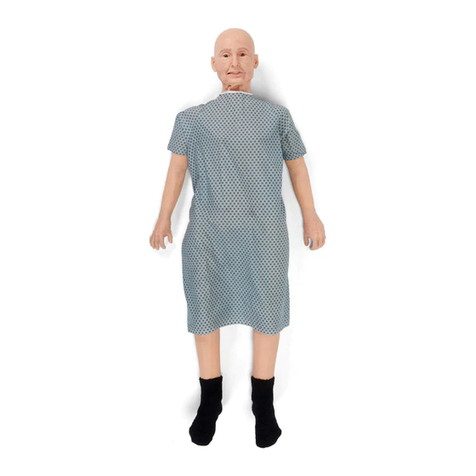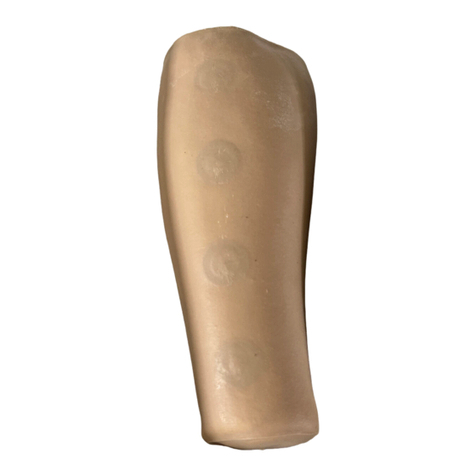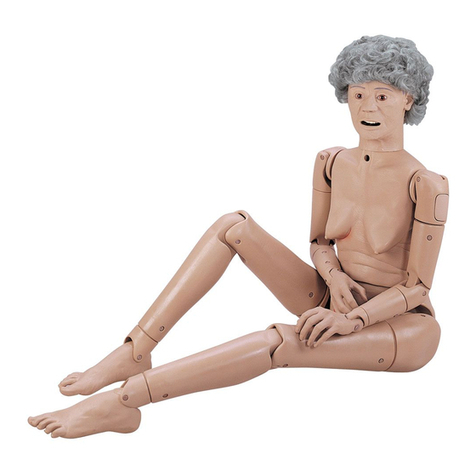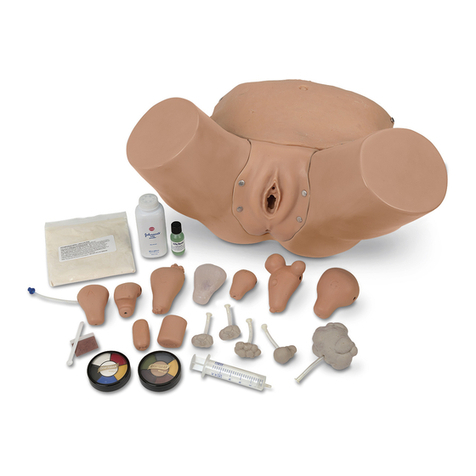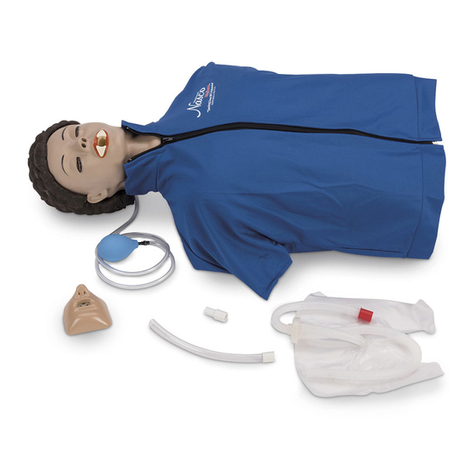Troubleshooting
PROBLEM: Cannot get blood to flow or flashback.
If you are unable to get blood flow through your IV Arm, there is most
likely a restriction somewhere within the system. Restrictions can be
caused by air bubbles, kinks (either in the veins or supply and drain
tubing), or dried blood within the system.
1. Check for kinks in the tubing of the fluid supply bags: If a
clamp has been located in one spot of the tube for a long period
of time, the tube can become kinked, restricting flow even when
the clamp is open. Massage the tube where the clamps have
been to open the tubing again. Change positions of clamps often
to keep this from reoccurring.
2. Fluid supply bag height: Is the supply bag hung at the appro-
priate height according to the instruction manual? Hanging the
supply bags slightly higher for the arms that are not producing
enough pressure can create just enough gravity on the fluid to
facilitate flow.
3. Vein connection: Are the veins/tubes connected to the manifold
correctly? Check correct positions in the instruction manual for
LF01122U Advanced IV Arm Skin and Vein Replacement Kit.
Contact Nasco for a FREE instructional video.
4. Check for air bubbles: Make sure you purge the arm of air
bubbles. Gradually “flush” the system with synthetic blood by
slowly opening the supply clamp. Allow some blood to pass
through the system until the air bubbles have been eliminated
in the drain bag. Close the clamp on the supply bag and then
turn the arm over so it is palm up. Slowly open the clamp to
allow some blood to pass through and to remove any remaining
air that is trapped in the system.
5. Dried blood left in veins from previous uses: If these are veins
that have been used before, you could try running a couple of
bags of clear warm water through them. There may be some
sediment from previous uses lodged within the veins/tubing.
6. Check vein tubing for kinks: Following a skin/vein replacement,
it is possible that a vein rolled out of the track or there may also
be a slight kink in the tubing. This is most likely in the underside
of the fingers. Flexing the fingers will sometimes work out the
kink. Try massaging the area of the arm (thumb and fingers) to
relocate the vein back within the track of the arm core. Also,
make sure you haven’t pulled the skin on too tight, causing a
restriction. Skins should be loose fitting, especially around the
thumb and finger areas. Apply lubrication to help move the
veins back into place.
Troubleshooting
PROBLEM: Cannot get blood to flow or flashback.
If you are unable to get blood flow through your IV Arm, there is most
likely a restriction somewhere within the system. Restrictions can be
caused by air bubbles, kinks (either in the veins or supply and drain
tubing), or dried blood within the system.
1. Check for kinks in the tubing of the fluid supply bags: If a
clamp has been located in one spot of the tube for a long period
of time, the tube can become kinked, restricting flow even when
the clamp is open. Massage the tube where the clamps have
been to open the tubing again. Change positions of clamps often
to keep this from reoccurring.
2. Fluid supply bag height: Is the supply bag hung at the appro-
priate height according to the instruction manual? Hanging the
supply bags slightly higher for the arms that are not producing
enough pressure can create just enough gravity on the fluid to
facilitate flow.
3. Vein connection: Are the veins/tubes connected to the manifold
correctly? Check correct positions in the instruction manual for
LF01122U Advanced IV Arm Skin and Vein Replacement Kit.
Contact Nasco for a FREE instructional video.
4. Check for air bubbles: Make sure you purge the arm of air
bubbles. Gradually “flush” the system with synthetic blood by
slowly opening the supply clamp. Allow some blood to pass
through the system until the air bubbles have been eliminated
in the drain bag. Close the clamp on the supply bag and then
turn the arm over so it is palm up. Slowly open the clamp to
allow some blood to pass through and to remove any remaining
air that is trapped in the system.
5. Dried blood left in veins from previous uses: If these are veins
that have been used before, you could try running a couple of
bags of clear warm water through them. There may be some
sediment from previous uses lodged within the veins/tubing.
6. Check vein tubing for kinks: Following a skin/vein replacement,
it is possible that a vein rolled out of the track or there may also
be a slight kink in the tubing. This is most likely in the underside
of the fingers. Flexing the fingers will sometimes work out the
kink. Try massaging the area of the arm (thumb and fingers) to
relocate the vein back within the track of the arm core. Also,
make sure you haven’t pulled the skin on too tight, causing a
restriction. Skins should be loose fitting, especially around the
thumb and finger areas. Apply lubrication to help move the
veins back into place.
10 10
NP097_95_LF01121U_LF01126U_AdvancedInjectionArm.indd 10 12/19/14 3:30 PM
